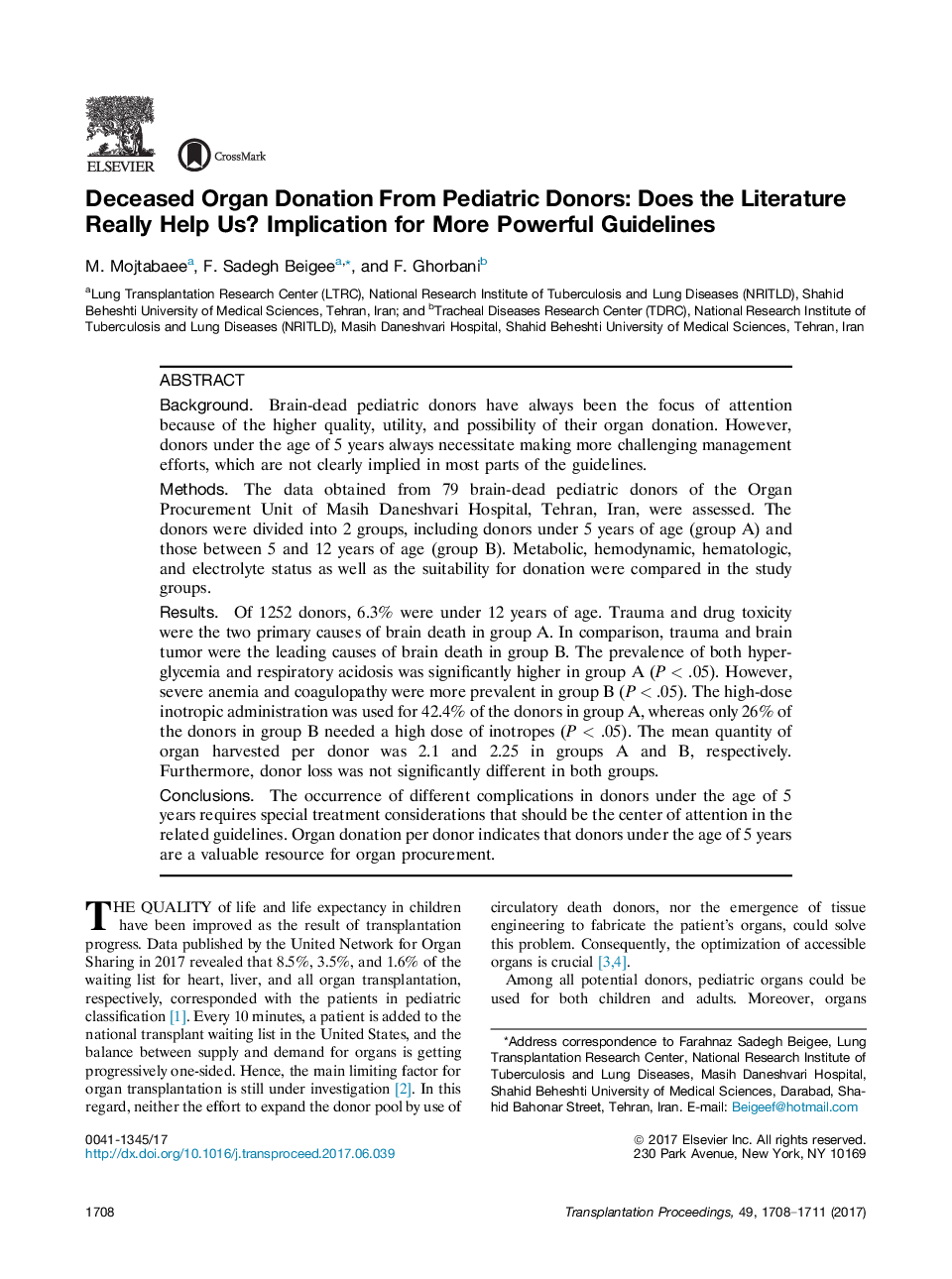| کد مقاله | کد نشریه | سال انتشار | مقاله انگلیسی | نسخه تمام متن |
|---|---|---|---|---|
| 5728617 | 1610669 | 2017 | 4 صفحه PDF | دانلود رایگان |
- Organs procured from pediatric deceased donors are a valuable, life-saving solution for both pediatric and adult recipients.
- The occurrence of some major metabolic disorders as well as many other medical casualties is significantly higher in pediatric donors under the age of 5 years, in comparison to that in older pediatric donors.
- Expert investigations to establish definite management guidelines and protocols are warranted to significantly expand the usage of pediatric organs.
BackgroundBrain-dead pediatric donors have always been the focus of attention because of the higher quality, utility, and possibility of their organ donation. However, donors under the age of 5 years always necessitate making more challenging management efforts, which are not clearly implied in most parts of the guidelines.MethodsThe data obtained from 79 brain-dead pediatric donors of the Organ Procurement Unit of Masih Daneshvari Hospital, Tehran, Iran, were assessed. The donors were divided into 2 groups, including donors under 5 years of age (group A) and those between 5 and 12 years of age (group B). Metabolic, hemodynamic, hematologic, and electrolyte status as well as the suitability for donation were compared in the study groups.ResultsOf 1252 donors, 6.3% were under 12 years of age. Trauma and drug toxicity were the two primary causes of brain death in group A. In comparison, trauma and brain tumor were the leading causes of brain death in group B. The prevalence of both hyperglycemia and respiratory acidosis was significantly higher in group A (PÂ < .05). However, severe anemia and coagulopathy were more prevalent in group B (PÂ < .05). The high-dose inotropic administration was used for 42.4% of the donors in group A, whereas only 26% of the donors in group B needed a high dose of inotropes (PÂ < .05). The mean quantity of organ harvested per donor was 2.1 and 2.25 in groups A and B, respectively. Furthermore, donor loss was not significantly different in both groups.ConclusionsThe occurrence of different complications in donors under the age of 5 years requires special treatment considerations that should be the center of attention in the related guidelines. Organ donation per donor indicates that donors under the age of 5 years are a valuable resource for organ procurement.
Journal: Transplantation Proceedings - Volume 49, Issue 8, October 2017, Pages 1708-1711
